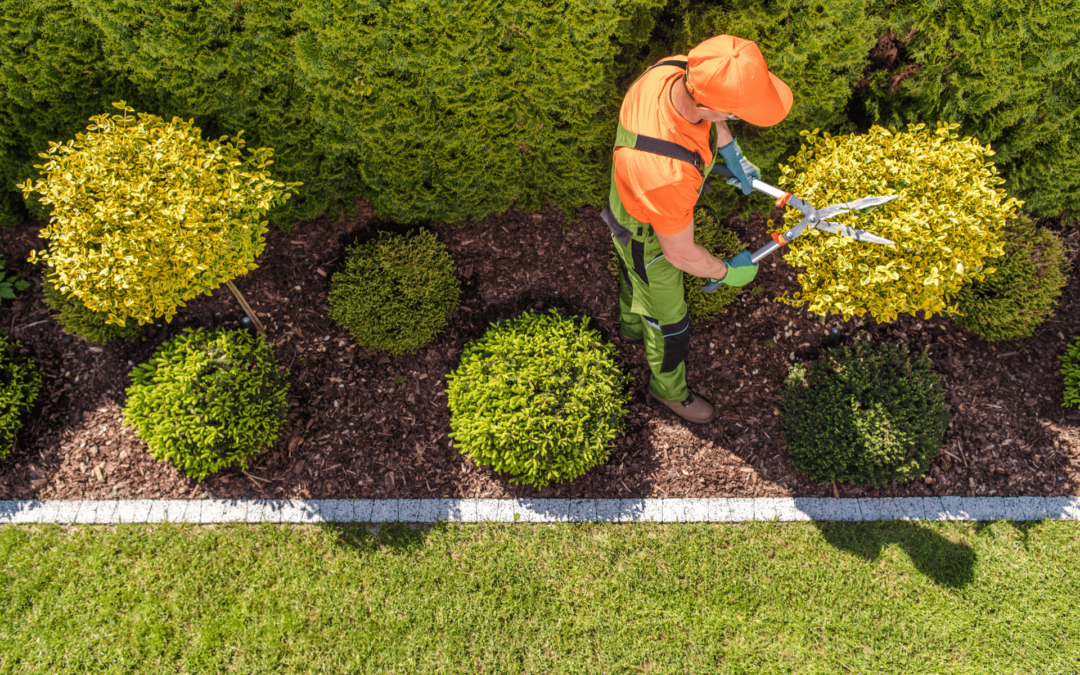During winter, we can tend to forget about our outdoor plants, trees, and shrubs. They are mostly dormant. But winter isn’t over just yet, so we must consider the weather we have already experienced and the oncoming colder temperatures and how they could affect our outdoor plants. There are a few issues that shrubs can face during the chill of winter.
Low temperatures can be the cause of several problems for your lawn in the winter, however, you must consider shrub maintenance during this time of year as well.
Root Damage from Freezing Temperatures
Low temperatures for extended periods of time can cause root damage, especially on younger, shallow-rooted shrubs. The best preventative is to lay mulch around the base of the shrub before any cold snaps and keep it there throughout the winter. If roots die, the foliage will turn brown, buds may die in early spring.
Frost Damage to Stems and Leaves
Ice, snow, and frost can cause cracks on stems and limbs. If the cracks remain on the surface, it can be an open wound for the shrub, allowing decay or disease later. Deep cracks may require pruning of that stem or branch. Evergreens can hold on to larger amounts of snow or ice and this may cause larger branches to crack or break completely.
Winter Bronzing & Leaf Yellowing
Winter bronzing is a condition that affects many evergreens and boxwoods. Bronzing will cause the plant to lose chlorophyll, usually due to cold win, full sun, and lower temperatures. These conditions will stress the plant and cause bronzing. The upside is that this is temporary; when the temperatures rise, the leaves will green up and new growth will bud.
A little different than bronzing, leaf yellowing occurs naturally. The lower and inner leaves of certain shrubs will turn yellow, and some may fall off. But this is no reason to panic as those less necessary leaves will sprout regrowth in the spring and fully recover.
Improper De-icing Methods
Using sodium chloride (salt) as a deicer on your driveway and sidewalks can be damaging to your shrubbery. The salt spray dries out the foliage and can kill plant roots. It is best to avoid getting sodium chloride on any plant life.
Wildlife Damage
Wildlife can also pose a hazard to your shrubbery. Rodents and rabbits will eat bark from shrubs and trees in the lower stem ad root collar during the winter months. This can kill the shrub. Deer, as food becomes less available, will eat on twigs and buds to survive.
Holly Leaf Spotting
If you have holly in your landscaping, you may notice holly leaf spotting. Various sized, dark spots will appear on the leaves of the plants. The spots are irregularly shaped and can be yellow, brown, or black. The holly can recover in the spring with proper water, pruning, and possible fertilizer treatments.
Keep Your Shrubs Healthy Year-Round with Executive Lawn Care
Most winter damage to shrubs is treatable come spring, but it is important not to forget your outdoor plants during the colder temperatures of February and even March. It is important to keep up with shrub maintenance and residential bed maintenance during the winter to ensure your landscaping health in the spring.
Executive Lawn Care is a trusted provider of Dallas lawn care service in the colder months. Reach out to Executive Lawn Care today to get your residential lawn and landscaping on our schedule for this winter and for the spring.



Recent Comments